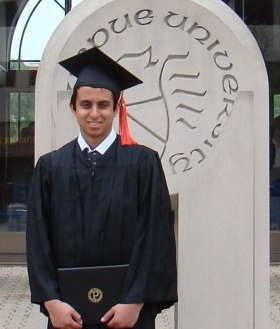(New page: '''Pigeonhole Principle''' This principle states that, given two natural numbers n and m with n > m, if n items are put into m pigeonholes, then at least one pigeonhole must contain more ...) |
|||
| Line 2: | Line 2: | ||
This principle states that, given two natural numbers n and m with n > m, if n items are put into m pigeonholes, then at least one pigeonhole must contain more than one item. Another way of stating this would be that m holes can hold at most m objects with one object to a hole; adding another object will force one to reuse one of the holes, provided that m is finite. More formally, the theorem states that there does not exist an injective function on finite sets whose codomain is smaller than its domain. In a family of three children there must be at least two of the same gender. | This principle states that, given two natural numbers n and m with n > m, if n items are put into m pigeonholes, then at least one pigeonhole must contain more than one item. Another way of stating this would be that m holes can hold at most m objects with one object to a hole; adding another object will force one to reuse one of the holes, provided that m is finite. More formally, the theorem states that there does not exist an injective function on finite sets whose codomain is smaller than its domain. In a family of three children there must be at least two of the same gender. | ||
| + | |||
| + | |||
| + | ---- | ||
| + | |||
| + | |||
| + | If you want to make a new page, just type Pigeonhole Principle in the box in the upper left, and hit Go. If it comes up that the page doesn't exist, then just click to make a new page.--[[User:Norlow|Norlow]] 18:47, 6 February 2009 (UTC) | ||
| + | |||
| + | (Feel free to delete this note after you read it) | ||
Latest revision as of 14:47, 6 February 2009
Pigeonhole Principle
This principle states that, given two natural numbers n and m with n > m, if n items are put into m pigeonholes, then at least one pigeonhole must contain more than one item. Another way of stating this would be that m holes can hold at most m objects with one object to a hole; adding another object will force one to reuse one of the holes, provided that m is finite. More formally, the theorem states that there does not exist an injective function on finite sets whose codomain is smaller than its domain. In a family of three children there must be at least two of the same gender.
If you want to make a new page, just type Pigeonhole Principle in the box in the upper left, and hit Go. If it comes up that the page doesn't exist, then just click to make a new page.--Norlow 18:47, 6 February 2009 (UTC)
(Feel free to delete this note after you read it)

